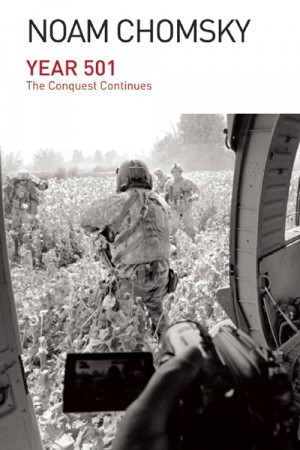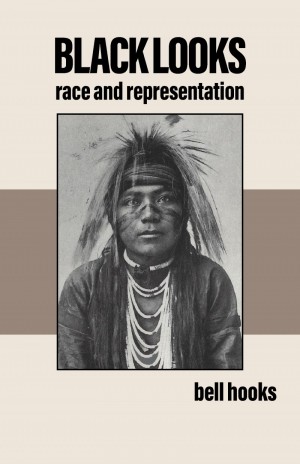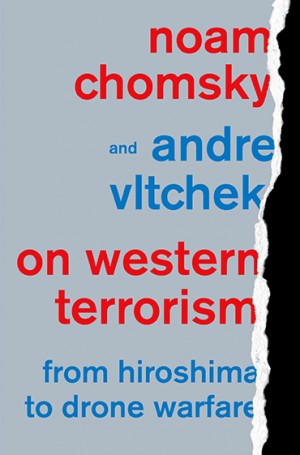
The Washington Connection and Third World Fascism
The Political Economy of Human Rights, Vol. I
Second edition
A brilliant, shattering, and convincing account of United States-backed suppression of political and human rights in Latin America, Asia, and Africa and the role of the media in misreporting these policies.
The Washington Connection and Third World Fascism relentlessly dissects the official views of establishment scholars and their journals. The “best and brightest” pundits of the status quo emerge from this book thoroughly denuded of their credibility.
Praise
A major contribution to understanding political repression inflicted by the CIA and its related services on millions around the globe and the economic requirements behind such repression… A must reading for all those who would resist.
– Philip Agee, former CIA agent
Contents
| Preface to the 2015 Edition | |
| Preface | |
| A Prefatory Note by the Authors on the History of the Suppression of the First Edition of This Book | |
| Part 1 | Introduction: Summary of Major Findings and Conclusions |
| 1.1 | Freedom, Aggression and Human Rights |
| 1.2 | The Semantics of "Terror" |
| 1.3 | The Shift in the Balance of Terror to the Free World |
| 1.4 | The Churches Versus the Totalitarian Free Enterprise "Development Model" |
| 1.5 | How the Media Cope with Client Fascist Terror (I): Suppression Plus an Emphasis on the Positive |
| 1.6 | How the Media Cope with Client Terror (II): The Pretense That the U.S. Is an Innocent Bystander, Rather Than Sponsor and Supporter of Client Fascism |
| 1.7 | How the Media Cope with Client Terror (III): "Atrocities Management" and the Demand for Communist Abuses |
| 1.8 | Cambodia: Why the Media Find It More Newsworthy Than Indonesia and East Timor |
| 1.9 | Media Self-Censorship: Or Why Two Soviet Dissidents Are Worth More Than 20,000 Tormented Latins |
| 1.10 | Corruption as a Primary Characteristic of U.S. Client States |
| 1.11 | Corruption and Terror as a Feedback Process: How the U.S. Undermines Its Own Democratic Order as It Sustains Counterrevolution Abroad |
| 1.12 | The New Vietnam: Or How to Abuse and Boycott a Savaged Victim That Is Behaving in a Way Contrary to Official Forecasts |
| 1.13 | The U.S. Record in Vietnam—and What Our Obligations and Policies Would Be on the Basis of Minimal Justice |
| 1.14 | The Touch of Racism in U.S. Policy Toward Indochina |
| 1.15 | The New Human Rights Movement—Only Victims East of the Elbe Need Apply |
| 1.16 | Individual Morality and Human Rights Policy |
| Part 2 | The Pentagon-CIA Archipelago |
| 2.1 | Neo-Colonialism and the Washington Connection |
| 2.1.1 | The Systematic Positive Relationship Between U.S. Aid and Human Rights Violations |
| 2.1.2 | U.S. Military and Police Aid and Training and the Spread of Fascism |
| 2.1.3 | The Scope and Variety of CIA Subversive Activities |
| 2.1.4 | The Pre-Eminence of Favorable Investment Climate |
| 2.1.5 | The Economic Role of Terror: Preserving and Enlarging Military, Comprador and Foreign Income Shares |
| 2.1.6 | Counterrevolution and the "Shakedown" States |
| 2.2 | Brainwashing Under Freedom |
| 2.2.1 | Sources and Processes |
| 2.2.2 | The Case of the Lost Bloodbath: The Supply of and the Demand for Communist Atrocities |
| Part 3 | Benign Terror |
| 3.1 | The Semantics of Terror and Violence: Retail Violence as “Terror”—Wholesale Violence as Maintaining "Order"and “Security" |
| 3.2 | Benign and Constructive Terror |
| 3.3 | Post-Colonial Rot and Permanent Counterrevolution |
| 3.4 | Benign Terror |
| 3.4.1 | East Pakistan: Tilting Towards Massacre |
| 3.4.2 | Burundi: “The Limitations of U.S. Power” |
| 3.4.3 | The Indians of Latin America: The Non-Civilized in the Way of "Progress" |
| 3.4.4 | East Timor: Genocide on the Sly |
| Part 4 | Constructive Terror |
| 4.1 | Indonesia: Mass Extermination, Investors’ Paradise |
| 4.2 | Thailand: A Corrupt "Firm Base" |
| 4.3 | Repacification in the Philippines |
| 4.4 | The Dominican Republic: U.S. Model for Third World Development |
| 4.5 | Latin America: Proliferating Subfascism |
| 4.5.1 | The Nazi Parallel: The National Security State and the Churches |
| 4.5.2 | Notes on Some Insecurity States in Latin America |
| Part 5 | Bloodbaths in Indochina: Constructive, Nefarious and Mythical |
| 5.1 | Constructive Bloodbaths in Vietnam |
| 5.1.1 | French and Diemist Bloodbaths |
| 5.1.2 | The Overall U.S. Assault as the Primary Bloodbath |
| 5.1.3 | Operation SPEEDY EXPRESS |
| 5.1.4 | The 43-Plus My Lais of the South Korean Mercenaries |
| 5.1.5 | Phoenix: A Case Study of Indiscriminate "Selective" Terror |
| 5.1.6 | The Last Years of the Thieu Regime |
| 5.2 | Nefarious and Mythical Bloodbaths |
| 5.2.1 | Revolutionary Terror in Theory and Practice |
| 5.2.2 | Land Reform in the Mid-Fifties |
| 5.2.3 | The Hue Massacre of 1968 |
| Appendix | Indochina—Quang Ngai Province Five Months After the Peace Agreement: Arrests, Tortures, Artillery Fire Continue as Before the Ceasefire Jane and David Barton |
| Notes | |
| Index |





